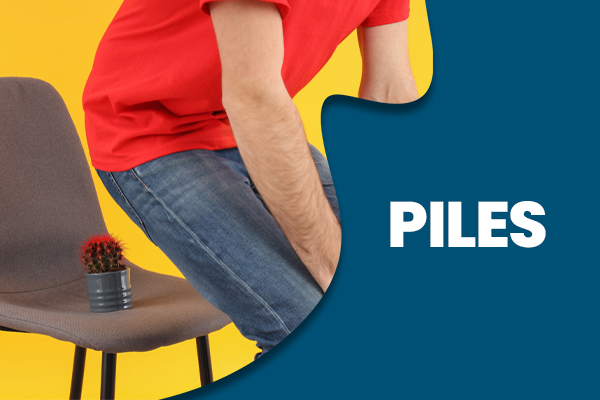Piles, also known as hemorrhoids, are swollen and inflamed blood vessels in the rectum and anus. They can be either internal or external. Internal hemorrhoids develop inside the rectum and are usually not visible or felt unless they prolapse (protrude) through the anus. External hemorrhoids, on the other hand, develop around the anus and can be seen or felt as a lump or swelling. The exact cause of hemorrhoids is not fully understood, but they are often associated with increased pressure in the rectal and anal areas. This can be a result of straining during bowel movements, chronic constipation, pregnancy, obesity, prolonged sitting or standing, and certain medical conditions such as liver disease. Symptoms of hemorrhoids can vary but may include:
- Rectal bleeding: Bright red blood may be seen on toilet paper, in the toilet bowl, or on the surface of the stool.
- Itching or irritation in the anal area.
- Pain or discomfort during bowel movements.
- Swelling or a lump near the anus.
- Leakage of feces or difficulty in cleaning the anal area.
Treatment for hemorrhoids often involves lifestyle modifications to alleviate symptoms and promote regular bowel movements. This may include increasing dietary fiber intake, drinking plenty of fluids, avoiding prolonged sitting or standing, and practicing good anal hygiene. Over-the-counter creams, ointments, or suppositories can provide temporary relief from itching and pain. In more severe cases or when conservative measures fail, medical procedures such as rubber band ligation (placing rubber bands around the base of the hemorrhoids to cut off their blood supply), sclerotherapy (injecting a chemical solution to shrink the hemorrhoids), or surgical removal may be recommended. It is important to consult a healthcare professional for an accurate diagnosis and appropriate treatment plan if you suspect you have hemorrhoids.

